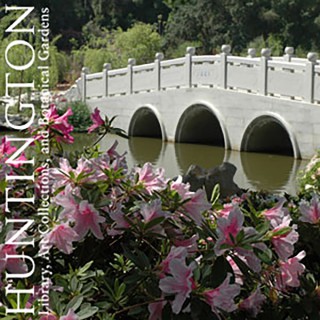Chinese Garden
Follow Chinese GardenInspired by the centuries-old Chinese tradition of private gardens designed for scholarly pursuits, The Huntington’s Chinese garden—Liu Fang Yuan, or the Garden of Flowing Fragrance—combines the scenic beauty of nature with the expressiveness of literature to give deeper meaning to the landscape. Th…
- Feb 18, 2014 LATEST EPISODE
- infrequent NEW EPISODES
- 1h 3m AVG DURATION
- 7 EPISODES
Latest episodes from Chinese Garden

Nancy S. Steinhardt, professor of East Asian art at the University of Pennsylvania, examines the work of China's four greatest 20th-century architects, who were given the mandate of constructing a new China. Through their personal stories, spanning tumultuous decades of war and internal strife, Steinhardt explores the intimate relationship between architecture, modernism, and the political arena.

The art, expression, and modern interpretation of Kun opera (kunqu), the oldest and most refined Chinese opera form, is explored in an evening of conversation and musical excerpts with impresario Peter Sellars and renowned Kun opera star Hua Wenyi. Sellars’ acclaimed 1999 production of “Peony Pavilion” with composer Tan Dun, which starred Hua, was a significant part of the evening’s discussion. The opera is based on a famous 16th-century play by Tang Xianzu. Also joining the conversation was Susan Pertel Jain, executive director of the UCLA Confucius Institute, who originally brought Sellars and Hua together in 1990 at the Los Angeles Festival. Qiaoer Zheng, a young Kun opera student from the Asian theater program at the University of Hawaii, joined Madame Hua in one scene. Kunqu flute player Henry Chang provided accompaniment.

Landscape designer Daxin Liu presents an illustrated lecture on the magnificent gardens of Suzhou, China, focusing on design principles and techniques that can be incorporated into Californian gardens to add classical Chinese touches to the landscape.

For the past 22 years, conservation biologist William McNamara has made annual treks into the mountains of China, Japan, and India in search of unusual plants. In this lecture, McNamara shares tales from his travels in the species-rich regions of Asia known to plant biologists as the “Edge of the World.”

June Li and Jim Folsom discuss future plans for The Huntington's Chinese garden.

Author Lisa See discusses her latest book, "Shanghai Girls," with Julie Robinson of Literary Affairs.

Ronald Egan, professor of East Asian languages and cultural studies at UCSB, discusses the symbolism of flowers in Chinese literature and art. Plum blossoms, chrysanthemums, peonies, lotus flowers, and other plants were often endowed with humanistic traits. Egan also explores the aesthetic tensions that occasionally surfaced as cultural tastes changed and new floral emblems gained favor.








